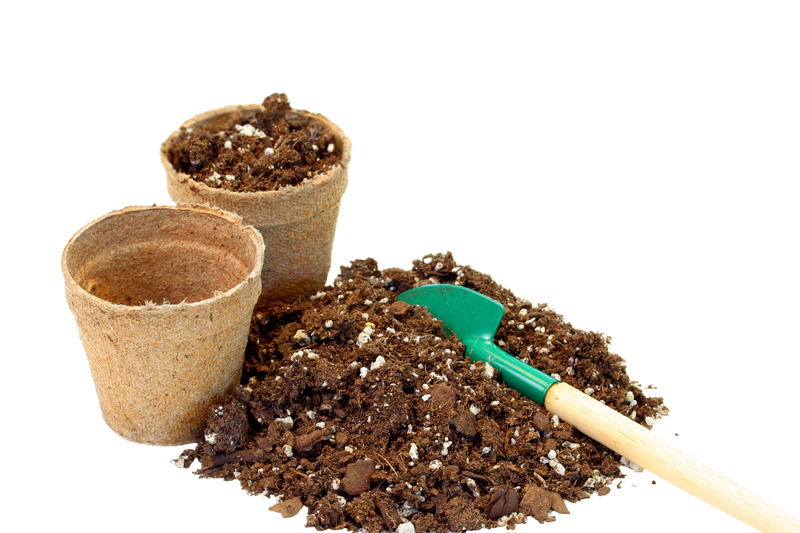Winterize Your Garden: Ensuring Plant Safety All Season
Posted on 25/08/2025
Winterize Your Garden: Ensuring Plant Safety All Season
As the chill of winter approaches, the urgency to winterize your garden becomes paramount for every gardener. Protecting your plants from frost, freezing temperatures, and harsh winds is pivotal to maintain a lush, healthy garden that thrives once spring returns. In this comprehensive guide, you'll discover expert methods, practical tips, and creative strategies to ensure plant safety throughout winter and beyond.

Why Winterizing Your Garden Matters
Winter can be a challenging season for gardens--even the hardiest plants may suffer damage from ice, snow, and fluctuating temperatures. By taking action to winter-proof your garden beds, you protect your investment and set the stage for vigorous growth come spring. Ensuring plant safety during winter not only preserves your current plantings but also supports the overall health of your garden ecosystem.
Key Benefits of Winterizing Your Garden
- Prevents frost damage and plant loss
- Preserves soil quality and structure
- Reduces weed growth in spring
- Prepares perennials, trees, and shrubs for renewed spring growth
Essential Steps to Winterize Your Garden
Implementing a thorough garden winterization plan involves several important steps that promote plant safety throughout the cold season. Here's how to safeguard your outdoor oasis:
1. Clean Up Your Garden Beds
Start by removing all dead or diseased plant material, spent annuals, and fallen leaves. This prevents overwintering pests and diseases while tidying up your garden for spring. Be sure to compost only healthy debris and dispose of any infected material.
2. Mulch for Insulation and Moisture
Applying a thick layer (2-4 inches) of mulch around your perennials, trees, and shrubs offers invaluable protection. Mulch insulates plant roots against temperature swings, conserves moisture, and suppresses weeds.
- Use organic options like shredded bark, straw, or compost.
- Keep mulch a few inches away from tree trunks and stems to avoid rot.
3. Protect Sensitive Plants
Some garden plants are especially vulnerable to cold temperatures. Wrap tender shrubs and roses with burlap, use plant covers or cold frames, and group potted plants close together in a sheltered area for added warmth.
- Cover young or delicate plants with frost blankets or floating row covers.
4. Water Wisely Before Ground Freezes
Before the first hard freeze, give your garden a deep watering. Moist soil retains heat better than dry soil, offering additional root protection. But avoid watering just before a freeze to prevent ice damage.
5. Prune and Trim Strategically
Pruning is an essential part of winterizing your garden. Remove dead, damaged, or diseased wood to prevent further issues over winter. Avoid heavy pruning of most plants late in the season, as this can stimulate tender new growth vulnerable to cold.
Advanced Strategies for Plant Safety All Season
For gardeners who want to go the extra mile, these advanced techniques can enhance winter plant protection:
Build Windbreaks and Shielding Structures
Constant winter winds can desiccate and damage plant tissue. Consider installing temporary windbreaks--like burlap screens, lattice panels, or fencing--on the windward side of your most vulnerable plants.
Utilize Cloches and Cold Frames
Cloche covers and cold frames create mini-greenhouse environments that buffer delicate greens and seedlings from severe cold. They are excellent for extending your growing season or giving tender crops an extra layer of protection.
Overwintering Container Plants
Pots are more susceptible to rapid temperature changes. To winterize potted plants:
- Move containers close to walls or inside garages for shelter.
- Wrap pots with bubble wrap, burlap, or old blankets to insulate roots.
- Add mulch to the top of containers for added protection.
Protecting Specific Types of Plants
Different plants have unique winter needs. Here are targeted tips for common garden favorites:
- Perennials: After frost, cut back stems to just above ground and mulch heavily to protect crowns.
- Roses: Mound soil or compost around the base, and wrap canes in burlap or cover with rose cones.
- Fruit Trees: Apply tree wraps to prevent sunscald and rodent damage. Avoid excessive winter pruning.
- Evergreens: Water thoroughly before freeze-up and shield from drying winds.
- Bulbs: Plant bulbs deep and mulch well. For non-hardy bulbs, dig and store indoors.
How to Prepare the Soil for Winter
Soil health is crucial for plant safety all season. Properly prepared soil ensures that plants wake up to rich nutrients and balanced structure in spring.
Steps to Improve Soil Before Winter
- Mix in organic compost to replenish nutrients depleted during the summer.
- Avoid heavy tilling; gentle cultivation preserves valuable soil structure and beneficial microbes.
- Consider planting cover crops, like clover or winter rye, to prevent erosion and restore nutrients.
- Mulch soil beds thickly after amending for maximal protection.
Winterizing Your Lawn
Your lawn needs care as much as your garden beds. Mow one final time, remove leaves to prevent smothering, and apply a winterizing fertilizer to support root development during dormancy.
Garden Tools and Structures: Winter Maintenance Tips
Don't forget to winterize your garden tools and infrastructure. Clean, sharpen, and oil all gardening tools before storing. Drain garden hoses and irrigation systems to prevent freeze damage, and check that raised beds or wheelbarrows are stored under cover.
Eco-Friendly Winterizing Tips
Sustainable winterizing practices benefit plants, the environment, and your wallet.
- Recycle fallen leaves as mulch or compost.
- Use biodegradable covers or cloths.
- Harvest rainwater or snowmelt for early spring watering.
- Choose natural, non-toxic pest deterrents for overwintering pests.
Common Mistakes to Avoid When Winterizing
- Pruning heavily too late in the year, leading to new, vulnerable growth.
- Applying thick mulch too early, inviting rodents or fungal issues.
- Forgetting to water plants before soil freezes.
- Leaving hoses or tools outside to freeze and crack.
- Not removing diseased material, which can overwinter pathogens.

Frequently Asked Questions About Garden Winterization
When is the best time to start winterizing?
Begin as temperatures start to consistently dip and before the first hard freeze. This varies by climate but is generally in late fall.
Do all plants need to be covered?
Not all. Hardy, native plants may need little more than mulch, while tender annuals or imported species benefit from covers or extra insulation.
Can I winterize a vegetable garden?
Absolutely. Remove all spent crops, add compost, and consider planting cover crops or using floating row covers to shield winter greens.
Conclusion: Invest in Plant Safety for a Thriving Spring
Winterizing your garden is a crucial process for ensuring plant safety all season long. With careful planning and these practical techniques, you'll defend your cherished plants from winter's harshest elements and set the stage for healthy, vibrant growth in the coming year. Take the time now to winterize your garden--your plants will reward you with beauty, bounty, and resilience.

